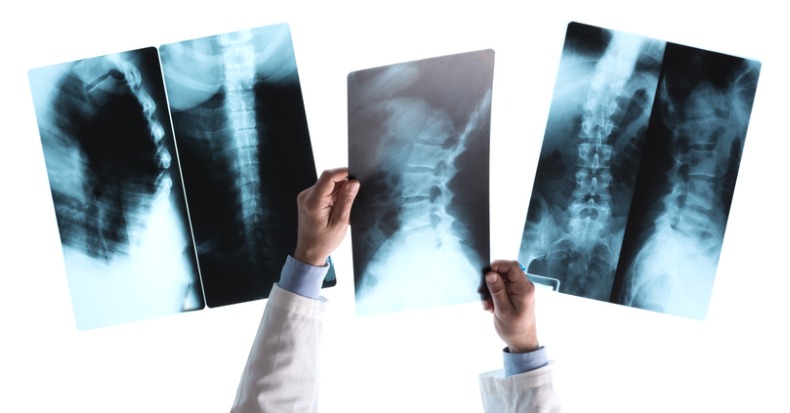Most chiropractic patients with low back pain have x-rays taken of their lumbar spine following a comprehensive examination. Since x-rays do carry a very small risk of tissue damage, this risk needs to be outweighed by the benefits that could be gained by taking such films. So, how are x-rays used in a chiropractic office?
First, x-rays can reveal the presence of medical conditions that may require referral to another healthcare provider, such as a spine tumor or an infection. Fortunately, these diseases are very rare, but they do need to be considered in every patient, especially those who may have certain “red flags” such as back pain at night or rest, or if there is also a fever. In addition, certain severe traumas (like a fall) can produce fractures. For older adults with osteoporosis or those taking steroid medications over several years, even a minor trauma event can be enough to cause a break, because the bone is in a weakened condition.
After these very rare conditions are ruled out, x-rays can provide important information about the patient’s anatomy and physical posture. For example, curvatures of the lumbar spine, such as scoliosis, are virtually undetectable without an x-ray. With information on how the spine is deviated, a doctor of chiropractic can direct his or her adjustments more specifically. Sometimes leg lengths are uneven and a person may require an orthotic (arch support) or heel lift to level the foundation for their spine. About one in ten patients will have an unequal leg length of a centimeter or more.
In terms of anatomy, x-rays can show the planes and angles of the disks between the vertebrae and whether any degeneration has occurred. If the degeneration is advanced, then a natural bone fusion may be present. It should be obvious that if the spinal anatomy does not allow movement or if the joints are literally fused and movement is impossible, then adjustments are not appropriate.
X-rays can also show a doctor of chiropractic how one area of the spine mechanically compensates for a deviated area below it. Sometimes, pain may be present at compensatory areas but without knowledge of the cause of this deviation, care may be less optimum. Just as the lumbar spine may compensate for a pelvic problem, so too can a neck condition be caused by abnormal postural lower down the spine.
In any case, x-rays are important to reach an accurate diagnosis, which is the first step on the road to recovery and regaining your vitality and quality of life.
